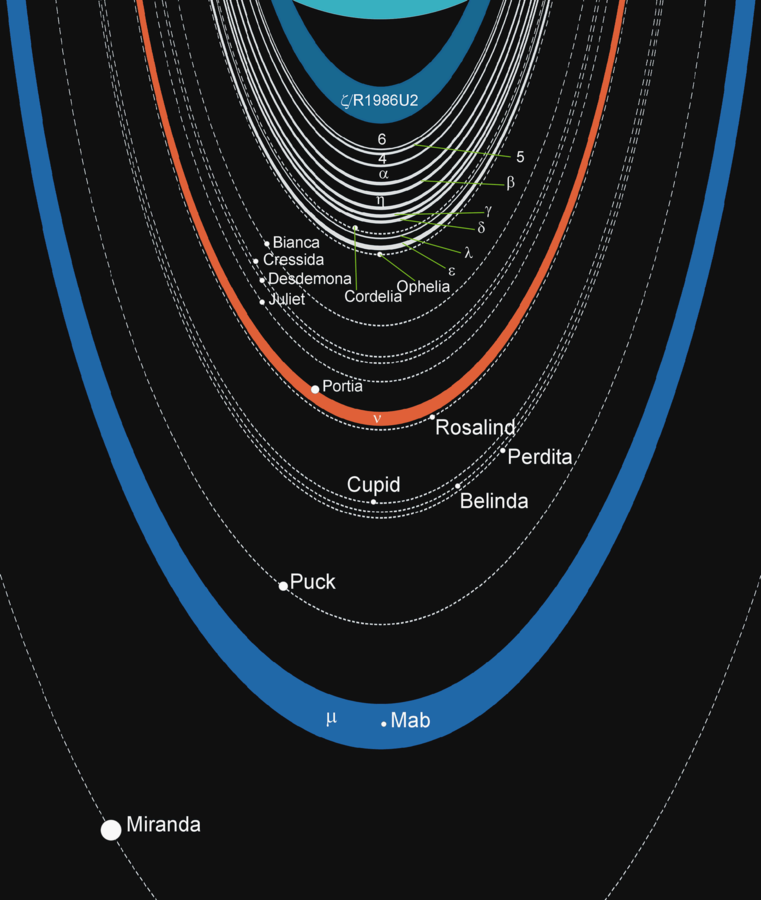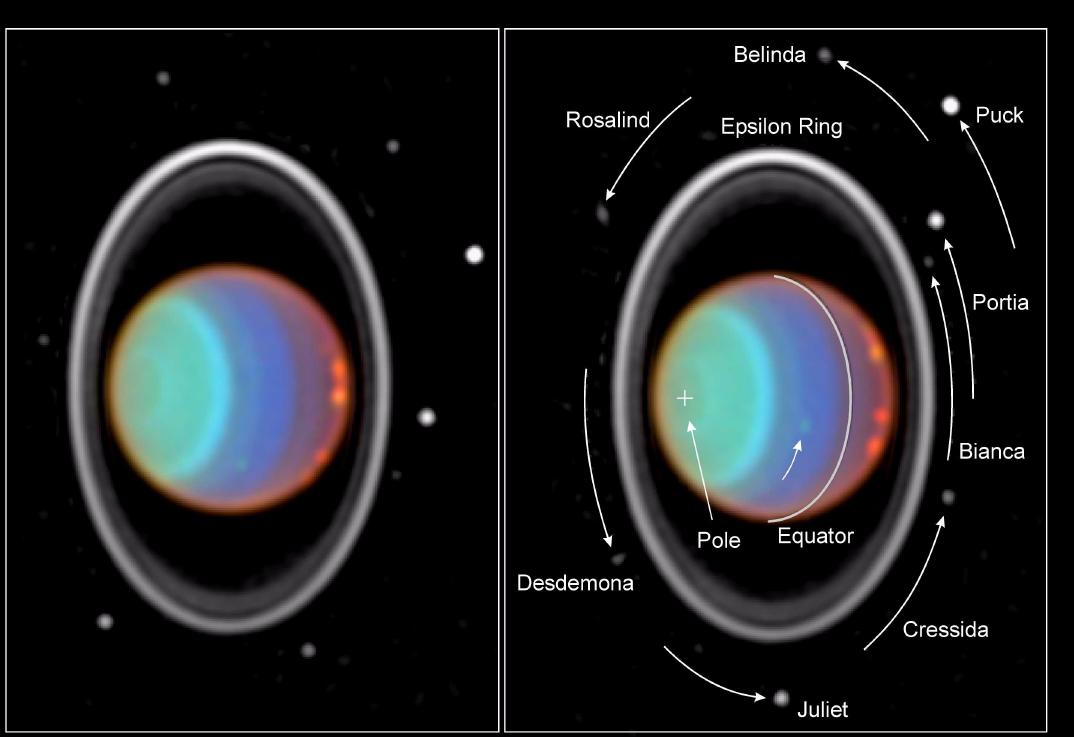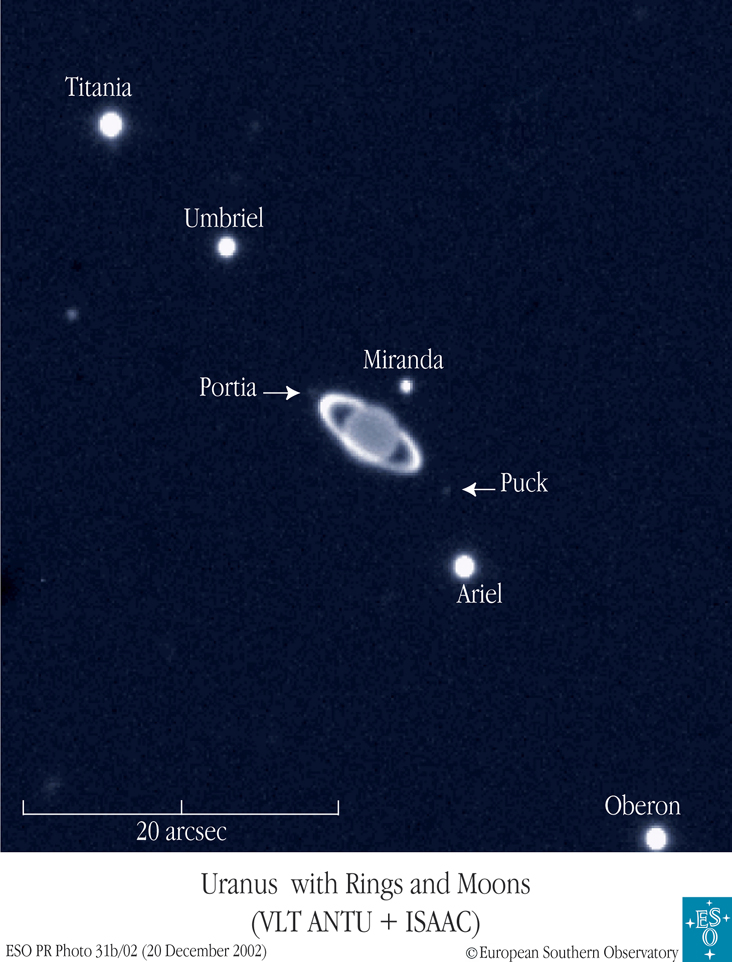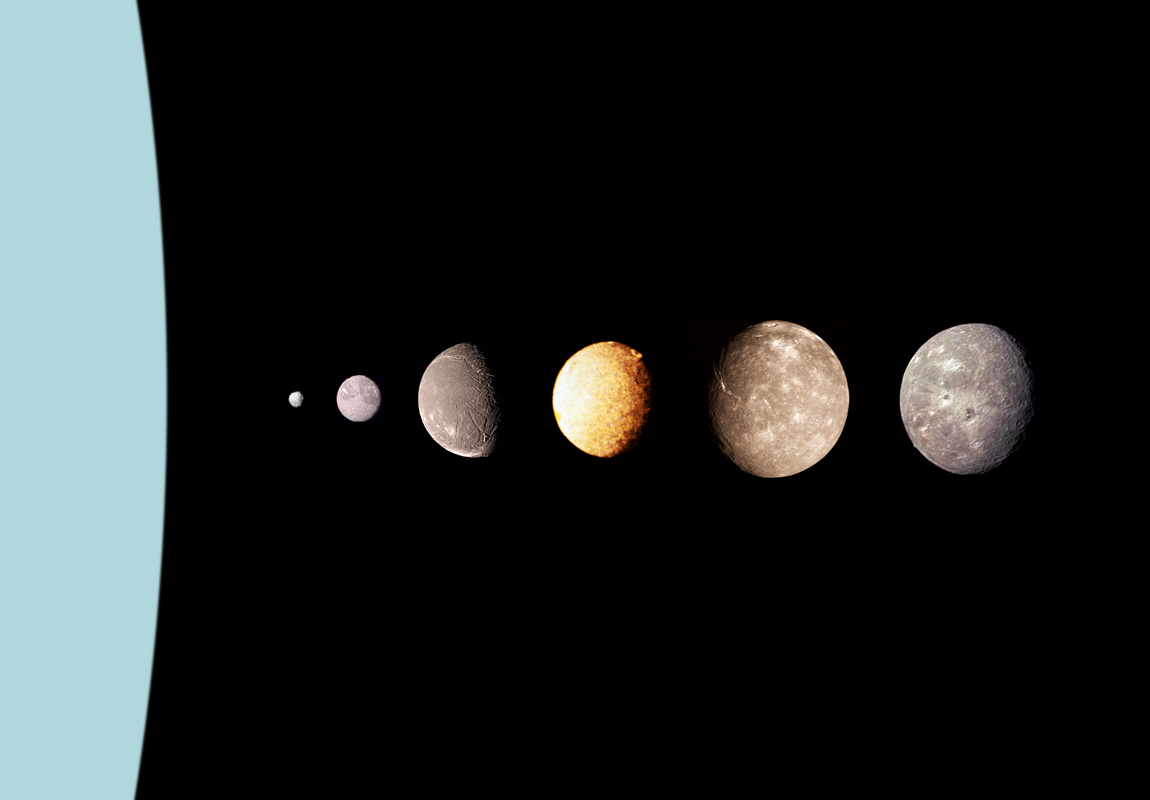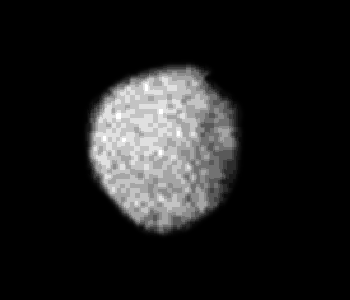Uranus’ Puck And Its Other Small Moons
The Mysterious Small Moon
The distant planet of Uranus has 22 small moons (that we know about…) discovered between 1985 and 2003 and as tradition with Uranus’ moons, have all been named after characters from the works of William Shakespeare (except for the little moon Belinda)! The moons are characterized into 3 distinct groups: 13 inner moons, 5 major moons, and 9 irregular outer moons!
Interesting Facts About Uranus’ Little Moons!
The great playwright William Shakespeare wrote in his play ‘A Midsummer Night's Dream’ "Oh Sweet Moon, I thank thee for thy sunny beams; I thank thee, Moon, for shining now so bright." Well, Uranus’ little moons don’t shine so bright, but they still bare the names of the playwright’s characters!
One of them, Puck, named after the little sprite who travels around the globe at night with the fairies (in Shakespeare's ‘A Midsummer Night's Dream’), is the largest inner moon of Uranus. Still, Puck is only about 160 km in diameter, but is approximately spherical with a dark heavily cratered surface that is likely made of a mix of water ice and rock.
Puck was discovered on the 30th December 1985, from images taken by Voyager 2 as the spacecraft approached Uranus for its historic flyby; sadly Voyager 2 is still the only space probe to have visited Uranus. Of the moons discovered by the Voyager 2 imaging team, only Puck was imaged to any detail.
Puck orbits near the outer edge of the inner moon region, between Uranus’ rings and taking less than one Earth day to orbit the planet!
The remaining small moons of Uranus were also discovered after during the Voyager 2 flyby or in subsequent years with the aid of powerful Earth-based and space-based telescopes. They are divided into two main groups (the Regular inner moons & Irregular outer moons);
- Regular Moons (prograde orbits with low inclinations)
- All of Uranus’ inner moons fall into this group as they are closely connected to its rings (which likely formed from the disintegration of several of the small inner moons in the distant past), often by acting as ring shepherds!
- So far astronomers have discovered 13 inner moons, but it is likely when a future spacecraft goes into orbit around Uranus it’ll discover more!
- All the inner moons (including Puck) are relatively dark bodies that only reflect about 10% of the sunlight, this is likely because their icy surfaces are covered in rocks or radiation-processed organics.
- The orbits of these moons are nearly coplanar; which basically means they all orbit in a disk above the planets equator.
- Being so close to Uranus, they also orbit quickly, completing their orbits between 8 and 22hrs! As a reference, the Earth’s Moon takes over 4 weeks!
- Irregular Moons
- There have been 9 discovered to date using Earth or space-based telescopes. These tiny moons orbit far out beyond the outer large moon Oberon and are most likely captured icy bodies that were trapped by Uranus’ large gravity field and range in size from 20 km to 150 km.
- To date, there has only been one irregular moon that has been discovered to orbit in a ‘prograde’ direction. Named Margaret after the Shakespearean character from ‘Much Ado About Nothing’ it currently has the most eccentric (0.7979) orbit of any moon in the solar system!
- The remaining 8 irregular natural satellites, like similar small captured moons in the solar system, have retrograde, elliptical and strongly inclined orbits at large distances from their gas giant planet.
